#forest products industry
Text
What Is The Size Of The Forest Products Industry In India?
The forest products industry in India is diverse and plays a crucial role in the country's economy. Numerous manufacturers are producing a wide range of products derived from forest resources.
The forest products industry involves the production of goods and services derived from forest resources. And this crucial sector includes both timber and non-timber products. This industry plays an important role in the growth and development of the economy as it has a significant impact on rural communities and the environment.
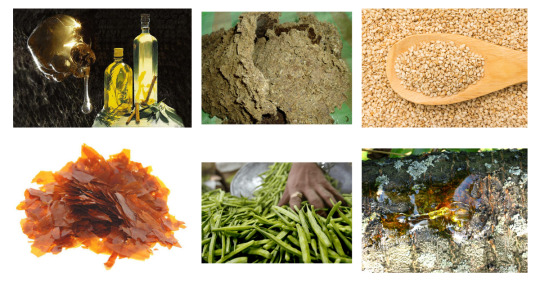
Classification Of Forest Produce
1. Timber products
This includes sawn timber, plywood, veneers, and other wood-based products derived from forests. These products have wide applications in construction, furniture, and interior design manufacturing
2. Paper products
Paper is needed for the publishing industry and includes newsprint, printing paper, tissue paper, packaging, and other products made from wood pulp. These products have wide applications in both residential and commercial sectors.
3. Non-timber forest products (NTFPs)
It includes a wide range of products derived from forest resources other than timber. Examples include rubber, resin, honey, nuts, mushrooms, and medicinal plants. There could be more products available depending on location and environment.
Bioenergy: Forests are a crucial source of bioenergy, including wood pellets, chips, and other biomass products used to generate electricity, heat buildings, and fuel vehicles.
India has a diverse range of forests that are home to a variety of tree species, many of which are used for different forest products. Some of the important forest products in India include the following:
Timber: India has several timber species that are used for furniture, construction, and other purposes. Some popular timber species include teak, rosewood, sal, deodar, sandalwood, and bamboo. The country has vast reserves of forests that provide quality timber.
Medicinal plants: India has a rich tradition of using medicinal plants for healthcare. Many of these plants are found in the forests and are used to produce medicines, herbal teas, and other health products. In addition, they are used to flavor cosmetics and health foods as nutritional supplements.
Non-timber forest products (NTFPs): NTFPs are products that are derived from forest resources other than timber. Some examples of NTFPs in India include honey, beeswax, bamboo shoots, mushrooms, and various spices. These products are in great demand in both domestic and global markets.
Paper: India has a large paper industry that relies on wood pulp for paper production. The country has several paper mills that use different types of wood for paper production. It has a significant contribution to the country's economy.
Rubber: India is one of the major producers of natural rubber, which is extracted from rubber trees found in forest areas. Rubber is used for various purposes in different industries.
Fruits and nuts: Many forest areas in India are home to mixed fruit and nut trees such as mango, jackfruit, cashew, and walnut. These products have generated huge demand in both domestic and global markets.
Lac: Lac is a resinous substance secreted by an insect and used in the production of shellac, which is used in making varnish, wax, and other products. India is one of the major producers of lac in the world. Also, the country has initiated a special program to promote lac farming.
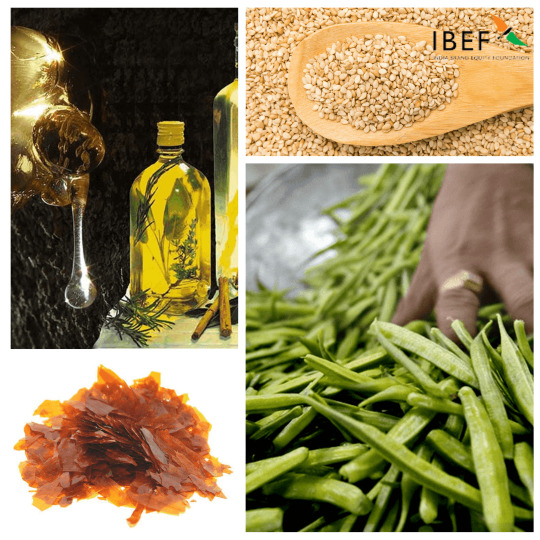
Government Initiative
The government formed Shellac Export Promotion Council (SEPC) in 1956 to promote the export of shellac and shellac-based products. Shellac is a resinous substance that is secreted by the female lac bug and is used in the production of various products, including varnishes, food glazes, and pharmaceuticals.
The SEPC is responsible for promoting the export of shellac and shellac-based products and providing support to shellac manufacturers and exporters. The council works closely with government agencies, industry associations, and other stakeholders to promote the use of shellac in various industries and to increase its export potential.
The Shellac Export Promotion Council works to create awareness about Indian shellac and forest products in the international market by organizing trade fairs, buyer-seller meets, and exhibitions. It also provides various kinds of assistance to exporters, such as information on market trends, opportunities, and regulatory requirements.
The SEPC is crucial in promoting and supporting the export of shellac and other forest products from India. Its various activities and initiatives help to increase the demand for Indian products and enhance the competitiveness of Indian exporters in the international market.
India has a thriving forest sector, with numerous manufacturers producing various products derived from forest resources. Some of the big forest products manufacturers in India include:
Greenply Industries: Greenply is one of the largest producers of plywood and other wood-based products in India. The company operates several manufacturing facilities across the country and offers a range of products, including plywood, veneers, and laminates.
Century Plyboards: Century Plyboards is another major player in the Indian Plywood industry, producing a wide range of plywood, veneers, and laminates. The company also operates a manufacturing facility that produces particleboard and MDF.
Dabur India: Dabur is a well-known Indian company that produces a range of ayurvedic and herbal products, including those derived from forest resources. The company is a major producer of honey, which is sourced from forest areas.
TTK Prestige: TTK Prestige is a manufacturer of kitchen appliances, including cookware and other products made from non-timber forest products like bamboo. The company sources bamboo from sustainable plantations and supports local communities through its operations.
Godrej and Boyce: Godrej and Boyce is a diversified company with operations in various sectors, including forest goods. The company produces a wide range of furniture, including those made from timber and other materials.
Cello Industries: Cello Industries is a manufacturer of plastic and composite products, including those made from bamboo composite. One of the most important forest-based industries, the company sources bamboo from sustainable plantations and produces a range of products, including furniture, flooring, and other items.
#forest-based industries#forest#forest products#forest products manufacturers#forest products industry#forest products in India#Indian forest
0 notes
Text
Not Sunday any more, but, have some thoughts. Only mildly ns.ft tbh. More a testament to Vigor's tragedy and desperation. Anyway, Vigor has strongly considered doing s.ex w.ork.
I am unsure as to how to tag this. There is discussion of how Vigor's work and abuse has affected his personal boundaries, as well as a brief mention of social stigma around sex work. Please ask to tag, and do not read if you are unsure as to how this headcanon will affect you. Thank you ♡

Vigor would often visit brothels, including Sharess' Caress, as Irnvar had built contacts in these businesses to gain information (blackmailing patrons, whispers of shady business dealing, etc.) Vigor was the gentle but charming man who offered no judgement and a significant bribe, and so he was well liked by those that were not offended by the selling of client's private information.
However, despite being there for secrets himself, he was not immune to the charms of the workers, letting it slip that he was unhappy working for Irnvar, even hinting that he did not do so willingly. Thankfully, his friends kept quiet. Vigor also mentioned that the money he used for bribes was solely for that purpose, and that he was not really paid by Irnvar, just housed and feed and gifted a small stipend. Vigor had little to no money of his own, as Irnvar feared giving him means to escape his grasp; he had enough to buy new plants, books, or the occasional treat, but not money to flee the city and bribe any witnesses to his escape along the way.
So, having bonded with a few workers, who then learned of his situation, one eventually suggested that he work at the brothel himself. They knew he was charming, and was evidently pretty. It was also blatantly obvious that was lonely, even if he refrained from mentioning it. What they couldn't have known, however, was that Vigor was already more than used to flirting with people he wasn't personally interested in; he never took things further than flirting and perhaps a quick make out session, only ever sleeping with people he wanted to, but the point being that Vigor had already broken down his personal boundaries years ago.
So, to then take it a step further and sleep with people he had no personal interest in was not unreasonable to him. In fact, it was made clear to Vigor that he would be allowed to freely accept or refuse a potential client, with his connection to the workers there already making him feel safer than working under Irnvar ever did.
If he did, he could save up enough money to make a new life for himself, all while forgetting about his troubles for a little while. Hell, Vigor was already making and using his own birth control. He also already had friends in the scene who would help him find his feet and hide from Irnvar. So, why not? Why did he change his mind?
The fear then was that Irnvar would find out very quickly. He might trust the bonds he'd made, but he couldn't trust the patrons coming through any brothel he might potentially work at. After all, Vigor personally knew just how many Upper City nobles would frequent the establishments, and feared being discovered, even if he took residence outside of Baldur's Gate. There was also the social stigma that he was raised around; no amount of personal experience with kind s.ex w.orkers could prevent the shame and guilt of social expectations, even if those who spouted the hate were also the most frequent customers.
In the end, Vigor turns down the job offer, returning to Irnvar with nought but fear and self-loathing.
However, I am open to writing an AU where he does accept, choosing that life over escaping into the wilderness. Location would be flexible, but it would have to be a safe and supportive place of work. I wouldn't ignore that Vigor has poor personal boundaries, and only considered the work out of desperation to escape his abusive adoptive father; the tragedy would come from Vigor himself, not the industry itself or his chosen brothel.
#hc.#nsft#< just in case#i also dunno how tumblr will handle this topic so ive just played it safe#ask to tag#this thought hit me like a truck at 2am#i want to write this actually#the portrayal of the industry would be positive whilst acknowledging that vigor's decision was a product of his circumstances#i have so many feels about it already#still hiding from irnvar after fleeing - but somewhere where he is safe and warm and earning money#whilst not ignoring how he got into the industry 🥲#its an improvement from his canon decision to live in a forest and starve and yet so so heartbreaking
2 notes
·
View notes
Text
USAmericans
Read the Project 2025 manifesto RIGHT NOW
It's MUCH worse than y'all have been hearing
There is so much here you'll have to look at it for yourself, but the climate policy alone is nightmare fuel.
The republican coalition wants to essentially end funding for green energy, dramatically promote and expand fossil fuel industries, and eliminate funding and regulations in all sectors promoting climate change mitigation. Task forces and offices related to clean energy and lowering carbon emissions will be eliminated and replaced with offices for promoting fossil fuels.
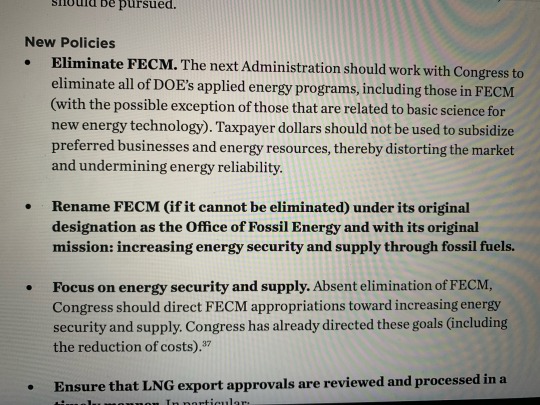
They want to LOG NATIONAL FORESTS TO "THIN" THE TREES TO STOP WILDFIRES.
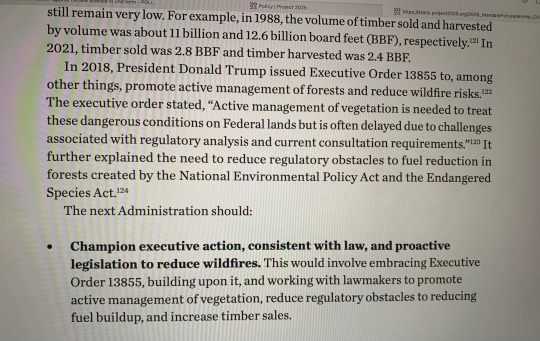
THEY WANT TO FORCE OREGON AND CALIFORNIA TO LOG THEIR NATIONAL FORESTS AND TREAT THEM AS FOR TIMBER PRODUCTION

There are specific provisions in Project 2025 to essentially destroy the Endangered Species Act, causing it to defer to the rights of "economic development" and "private property." The plan includes delisting gray wolves, cutting the budget so that a "triage" system is used to determine which species will get protection, removing funding for research, removing experts and specialists from the decision-making process, and preventing "experimental" populations of animals from being established.
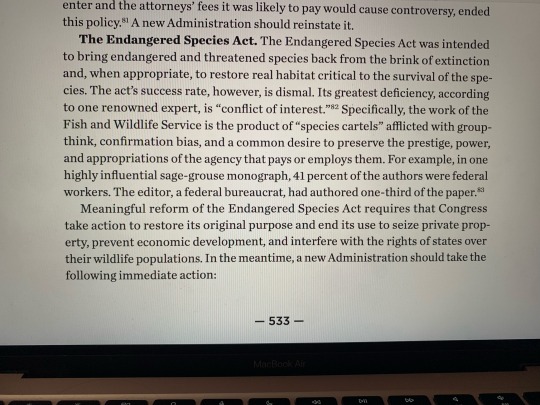


This is so much worse than I expected it to be and there's much more past that: They want to deregulate pesticides and remove much of the EPA's ability to regulate pollutants as well.
Also included in the manifesto is that we should
withdraw from nuclear weapons nonproliferation agreements, build more nuclear weapons, and resume nuclear weapons testing

The manifesto comprehensively outlines the scorched-earth elimination of abortion access, down to ensuring doctors aren't even trained to perform abortions. There are plans in here to disrupt abortion access GLOBALLY, not just domestically.
Not only that,the Republicans plan on reframing family planning programs around "fertility awareness" and "holistic family planning."

I can't even describe it all. I'm trying to give screenshots of the most important things but there's so much.
The foreign policy is a nightmare. They plan to push fossil fuels onto the Global South and promote the development of fossil fuel industry in the "developing world."
It is aggressive and antagonistic towards other nations, strongly pro-military, proposing that we INCREASE (!!!!!) defense spending, improve public opinion of the military and military recruitment, and increase the power to fund new weapons technology.
Just read the Department of Defense section. It's about greatly increasing and strengthening the military-industrial complex, collaborating more closely with weapons manufacturers, removing regulatory barriers to arming our allies and to inventing new military weapons, and recruiting more people into the military. They include provisions to develop AI technology for surveillance. And of course, continuing to support Israel is in there.
Elsewhere it proposes interfering in foreign countries with creepy pro-USA propaganda campaigns, even establishing international educational programs where faculty have to pledge to promote USA interests.
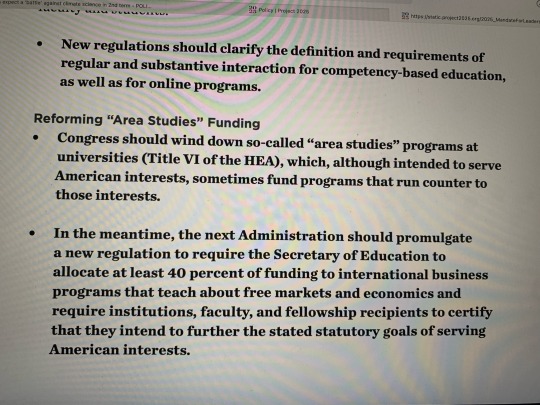
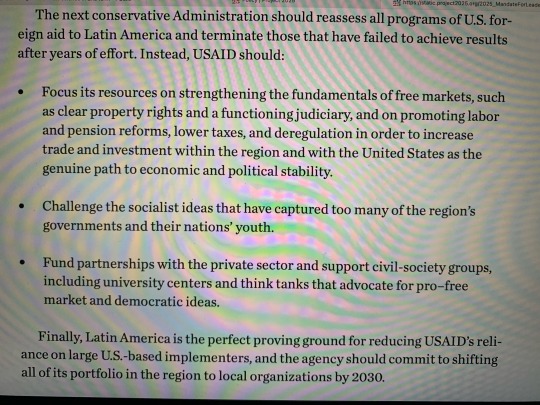
There's a line in here about getting rid of PBS because SESAME STREET is LEFTIST for God's sake.
HOW are people claiming democrats have the same policies. I feel like i'm losing my mind.
16K notes
·
View notes
Text

Hate Forest - Temple Forest (Galgenstrang Productions, Funeral Industries, 2010)
youtube
0 notes
Text
The multifaceted argan tree.
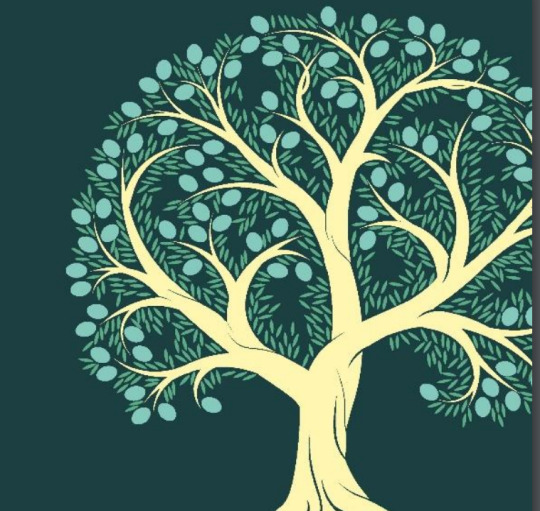
The argan tree (Argania spinosa) is a native species of the sub-Saharan region of Morocco, in the southwest of the country, which grows in arid and semiarid areas. It’s the defining species of a woodland ecosystem, also known as Arganeraie, which is rich in endemic flora. It is resilient to a harsh environment under water scarcity, risk of erosion and poor soils.
This ecosystem of extraordinary beauty is not only important in terms of conservation, but also for research and socio-economic development, due to its forestry, agricultural and livestock use.
The argan tree woodlands provide forest products, fruits and fodder. The leaves and the fruits are edible and highly appreciated, as is the undergrowth, and constitute a vital fodder reserve for all herds, even in periods of drought. The trees are also used as fuelwood for cooking and heating.
The world-renowned argan oil is extracted from the seeds and has multiple applications, especially in traditional and complementary medicine and in the culinary and cosmetic industries.
#argania spinosa#arganeraie#endemic flora#woodlands#forest products#edible fruit#edible leaves#fodder reserve#fuelwood#argan oil#araganeraie seeds#traditional and complementary medicine#culinary and cosmetic industries#argan ecosystem#sub-Saharan region of Morocco#arid and semiarid areas
0 notes
Text
PROVISIONAL PROGRAMME - Celebration of the International Day of Forests 2024.

On March 21st, from 10:00 am to 1:00 pm, at the United Nations Trusteeship Council chamber, New York;
- OPENING SESSION -
Opening remarks: Ms. Juliette Biao, Director, UN Forum on Forests Secretariat
H.E. Ambassador Paula Narváez, President of the UN Economic and Social Council
H.E. Ambassador Zéphyrin Maniratanga, Chair of the UNFF19 Bureau
Mr. Li Junhua, Under-Secretary-General, DESA
- PANEL SESSION -
Chair: Ms. Leticia Zamora Zumbado, Vice-Chair of the UNFF19 Bureau
Mr. QU Guangzhou, Director, FAO Liaison Office, New York
Speaker tba, USDA Forest Service
Ms. Anna Rathmann, Executive Director, Jane Goodall Institute
Speaker tba, International Forestry Students’ Association
Mr. Derek Nighbor, President and CEO of the Forest Products Association of Canada
Mr. José Carlos da Fonseca, Executive Director, The Brazilian Tree Industry (Ibá)
Mr. Kai Lintunen, Head of International Communication, Finnish Forest Association
- GENERAL DISCUSSION-
Chair: Mr. Javad Momeni, Vice-Chair of the UNFF19 Bureau
Statements by Member States, UN entities and other accredited IGOs and Major Groups
FOREST VIDEO SHOWCASE
Short films from FAO and the 2024 World Wildlife Day Film Showcase (CITES and Jackson Wild)
Forests and innovation – new solutions for a better world
How Old Cell Phones Are Protecting the Rainforest
This New AI Forensic Tool is Fighting Illegal Logging
NASA Joins Jane Goodall to Conserve Chimp Habitats
United Nations Forum on Forests, UNDESA on the International Day of Forests 2024.
#USDA Forest Service#UNFF19 Bureau#United Nations Forum on Forests#International Forestry Students’ Association#Jane Goodall Institute#Forest Products Association of Canada#The Brazilian Tree Industry#Finnish Forest Association#United Nations Economic and Social Council#United Nations Trusteeship Council#international day of forests#21 march#Agenda Programme#panel discussion
0 notes
Text
The World's Forests Are Doing Much Better Than We Think
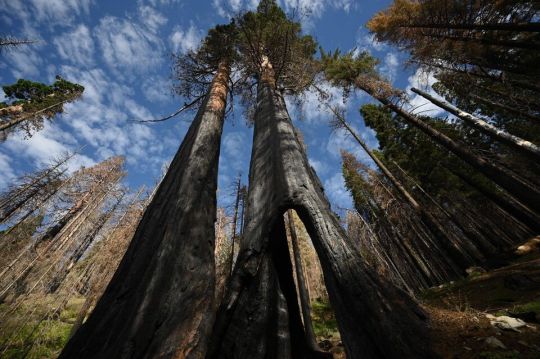
You might be surprised to discover... that many of the world’s woodlands are in a surprisingly good condition. The destruction of tropical forests gets so much (justified) attention that we’re at risk of missing how much progress we’re making in cooler climates.
That’s a mistake. The slow recovery of temperate and polar forests won’t be enough to offset global warming, without radical reductions in carbon emissions. Even so, it’s evidence that we’re capable of reversing the damage from the oldest form of human-induced climate change — and can do the same again.
Take England. Forest coverage now is greater than at any time since the Black Death nearly 700 years ago, with some 1.33 million hectares of the country covered in woodlands. The UK as a whole has nearly three times as much forest as it did at the start of the 20th century.
That’s not by a long way the most impressive performance. China’s forests have increased by about 607,000 square kilometers since 1992, a region the size of Ukraine. The European Union has added an area equivalent to Cambodia to its woodlands, while the US and India have together planted forests that would cover Bangladesh in an unbroken canopy of leaves.
Logging in the tropics means that the world as a whole is still losing trees. Brazil alone removed enough woodland since 1992 to counteract all the growth in China, the EU and US put together. Even so, the planet’s forests as a whole may no longer be contributing to the warming of the planet. On net, they probably sucked about 200 million metric tons of carbon dioxide from the atmosphere each year between 2011 and 2020, according to a 2021 study. The CO2 taken up by trees narrowly exceeded the amount released by deforestation. That’s a drop in the ocean next to the 53.8 billion tons of greenhouse gases emitted in 2022 — but it’s a sign that not every climate indicator is pointing toward doom...
More than a quarter of Japan is covered with planted forests that in many cases are so old they’re barely recognized as such. Forest cover reached its lowest extent during World War II, when trees were felled by the million to provide fuel for a resource-poor nation’s war machine. Akita prefecture in the north of Honshu island was so denuded in the early 19th century that it needed to import firewood. These days, its lush woodlands are a major draw for tourists.
It’s a similar picture in Scandinavia and Central Europe, where the spread of forests onto unproductive agricultural land, combined with the decline of wood-based industries and better management of remaining stands, has resulted in extensive regrowth since the mid-20th century. Forests cover about 15% of Denmark, compared to 2% to 3% at the start of the 19th century.
Even tropical deforestation has slowed drastically since the 1990s, possibly because the rise of plantation timber is cutting the need to clear primary forests. Still, political incentives to turn a blind eye to logging, combined with historically high prices for products grown and mined on cleared tropical woodlands such as soybeans, palm oil and nickel, mean that recent gains are fragile.
There’s no cause for complacency in any of this. The carbon benefits from forests aren’t sufficient to offset more than a sliver of our greenhouse pollution. The idea that they’ll be sufficient to cancel out gross emissions and get the world to net zero by the middle of this century depends on extraordinarily optimistic assumptions on both sides of the equation.
Still, we should celebrate our success in slowing a pattern of human deforestation that’s been going on for nearly 100,000 years. Nothing about the damage we do to our planet is inevitable. With effort, it may even be reversible.
-via Bloomburg, January 28, 2024
#deforestation#forest#woodland#tropical rainforest#trees#trees and forests#united states#china#india#denmark#eu#european union#uk#england#climate change#sustainability#logging#environment#ecology#conservation#ecosystem#greenhouse gasses#carbon emissions#climate crisis#climate action#good news#hope
3K notes
·
View notes
Text
I’m sure everyone remembers the article from 2020 where researches found three-ply cordage made by Neanderthals.^
But did you know that in the supplemental material for the article, it mentions that pine needles can be made into textiles?^^ As someone who works with textiles myself, I had come across pine needles as a dye stuff, but not as a fibre.
The source is listed as "L’acquisition des matières textiles d’origine végétale en Préhistoire" by Fabinne Médard. It talks about how other fibres, including brambles and broom could have been used prehistorically for a similar purpose, as well as flax. However, it contains only one metion of pine needles.
“Les aiguilles du pin sylvestre (Pinus sylvestris L.) fournissaient, après rouissage, une matière textile appelée « laine des forêts » qui remplaçait la ouate et l’étoupe dont on faisait également des tissus (Mathieu [1858] 1897)" *
The needles of the Scots pine (Pinus sylvestris L.) provided, after retting, a textile material called “forest wool” which replaced wadding and tow from which fabrics were also made.
So Scots pine needles were processed, spun and woven, or simply used directly after processing, potentially prehistorically.
If you follow the source for the quote above, it takes you to a book from 1860 called Flore forestière; description et histoire des végétaux ligneux qui croissent spontanément en France et des essences importantes de l'Algérie. It says:
“On fabrique depuis quelques années, avec les faisceaux fibreux, allongés, et tenaces des aiguilles, une espèce de drap grossier.” **
For several years, we have been making a kind of coarse cloth using the fibrous, elongated and stiff bundles of the needles.
So this processing of pine needles was also happening in the 1800s.
Another souce from the 1840s describes the texture of forest wool as resembling "...horsehair, and has been used for stuffing mattresses"** and that an industry sprung up in Humboldtsau, near Breslau for processing it. Manufacturies for forest wool then spread to Sweden, Holland and France, which may explain the mention in the 1860 Flore forestière.
Despite looking a bit more, but couldn't find much else on the subject expect a recent masters thesis in German (which I couldn't access) and an article on the designer Tamara Orjola.
Orjola's work investigates the modern use of pine needle fabric, showing there is still interest in it. She says:
"Forest Wool began with research on the forgotten value of plants. Valuable local materials and techniques are left behind due to the unwillingness of mass-production to adopt more sustainable practices. In the old days the pine tree was used as food, remedies, to build homes and furniture and for many other purposes. Nowadays, it is only valuable for its timber." ***
I find the line from prehistory to now facinating - that people have looked to something as mundane as a pine needle to spin, especially as researchers are discovering a lot of what they thought was linen fabric is actually ramie (from nettles).
As far as I can tell, only Pinus sylvestris L. and one other variety was used. I am not sure what makes that tree more suitable than other pine trees, or if it was simply a question of availability. In terms of processing, the answer as far as I can tell is retting, presumably followed by scutching and hackling - similar to how flax is processed. However I have not done that myself and cannot speak to the specifics.
It would be something intresting to try though.
________
^ https://www.nature.com/articles/s41598-020-61839-w#MOESM1
^^ https://static-content.springer.com/esm/art%3A10.1038%2Fs41598-020-61839-w/MediaObjects/41598_2020_61839_MOESM1_ESM.pdf
* https://journals.openedition.org/nda/602
** https://www.proquest.com/openview/276605d708970d416923b94e8856d20b/1?pq-origsite=gscholar&cbl=41445
*** https://lampoonmagazine.com/article/2021/05/15/recycled-wood-pine-needles-byproduct/
#fabric#history#i was consumed by the spirit of academia and could not stop reading french articles#please excuse the use of Google translate#my French is okay but not academic article good#it’s just a super interesting topic#the variety of plant fibres used for textiles is always larger than I think
800 notes
·
View notes
Text
Giedi Prime (House Fenrir Dune AU)
word count: 1498 Words
pairing: Feyd-Rautha Harkonnen x Bene Gesserit!Reader
warnings: none (yet)
summary: you arrive on Giedi Prime for the Na-Baron's birthday celebration, but you have another task ahead of you.
Before you arrived on Giedi Prime, you didn't believe a place could be completely devoid of color, but as you stand on one of your father's heighliners looking over the planet, you have come to believe what they say. You peered at the black and white planet below from the bridge as the ship waited for its permission to land on the surface. House Fenrir was one of the many invited to the celebration for the Na-Baron's twentieth birthday and one-hundredth gladiator fight.
Even from outside the atmosphere, you can see the planet is heavily polluted from the fervent industrialization led by House Harkonnen over the centuries.
A nervousness settled in your stomach when you entered the planet's orbit, and your father's reservations about the match weren't easing the anxiety creeping through your bloodstream. Today was the day that you would begin to seduce the Baron's heir.
"We could always go back home," the archduke said. He has joined you at the window.
"It would not serve our house to make an enemy out of the Harkonnens," you reply in a monotone voice.
They were known for maintaining a cruel and tyrannical grip over their worlds. Violence and war were ingrained in their culture, and you had no doubt they would inflict that bloodshed on your people. If their treatment of the people of Arrakis was any indicator of how they treated those who displeased them, you knew they could do the same to Fenrir.
"Wise words," Lady Aurelia, your father's concubine, said.
Lady Aurelia was the closest thing you had to a mother after your own had died of a mysterious illness during your adolescence. You knew she did not see you the same way, though. Your father openly favored you and your older sister, Maron, over her two sons. To her, you were simply an obstacle in the way of her eldest son inheriting your father's title.
"They could reverse engineer our harvesters or simply kill us and take over production, and the emperor wouldn't bat an eye," you said, turning away from the grim image of the planet that you would soon call home if all went according to the Reverend Mother's plan.
"I hate the thought of leaving you in this place," Vulcan says.
Lady Aurelia sighs. "Y/N can take care of herself; I've seen to it."
"Lady Aurelia is right, father. I am more than capable of completing the task that the sisterhood has given me," you tell him.
Your reassurance only causes the worry lines around his mouth and forehead to deepen.
"Your Grace," a servant said.
The three figures at the window turn, and the servant curtsies quickly in respect.
"We have been given permission to land, Your Grace. We await your command," the servant says and curtsies again.
You watch her nervously scamper off. It seems that Vulcan wasn't the only one on edge today.
The landing was relatively uneventful, and the surface of Giedi Prime was just as bleak as you imagined. There were no natural plants in sight, and the air had a bitter taste to it that coated your tongue, throat, and sinuses. It made you miss Fenrir bitterly, with its vast oceans and thick forests that enveloped the less developed parts of the planet.
In the light of Giedi Prime's black sun, your ice blue dress looks silver. It's form-fitting to your body with a halter neck and leaves your arms bare. The look was completed with teardrop-shaped pearl earrings set in silver hardware.
A female servant is already waiting for you when the ship lands. She is pale and completely devoid of hair. She wears a dark-colored dress of a peculiar cut, and she keeps her eyes on the floor.
She curtsies deeply when you step off the ship with your father and Lady Aurelia into Harkonnen Palace's ship dock.
"I have been ordered by the Baron to show you to your quarters before the spectacle, Your Grace," the servant says in a small, timid voice.
Your father opens his mouth to reply, but the girl turns on her heel quickly and hurries toward another crowd of visitors being led by another woman in an identical dress. She waits to let the guests from a house you didn't recognize pass before continuing her beeline to the door.
You see Vulcan and Aurelia exchange a glance before all three of you follow after her.
The inside of the Harkonnen Palace is just as bleak as the outside. It is made up of identical black and white hallways; one could easily get lost in them. The servant girl expertly navigates these identical hallways without raising her eyes. She's obviously been here for quite a while. You wonder what horrible things she witnessed, or perhaps endured, in her employment here.
The woman is completely silent until she arrives at a nondescript slate gray door with a black panel installed on the wall next to it. "This is your room, Lady Y/N, and your parents are right beside you."
She motions toward an identical door to the left.
Lady Aurelia goes to her and your father's door and presses her hand to the panel. The panel glows, and the door slides open.
"What did it just do?" your father asks, puzzled.
"The doors to your quarters are programmed, so you need your handprint to get into them, Your Grace," the girl responds. "The Baron has found guests feel more secure when they are the only ones who have access to their living space."
Your father nods and presses his hand to the panel. Lady Aurelia walks into their room without another word.
"Just knock if you need anything, darling," Vulcan said, following her inside.
Their door slides shut behind them, leaving you alone with the servant.
"How did I find my way around?" you ask.
The girl makes eye contact with you for the first time.
"I strongly advise you not to walk around without someone to escort you, My Lady," the servant girl said firmly. "This is not a place where one wants to get lost."
This wasn't a request; it was a warning. The girl's eyes darted back toward the ground. You place your hand on your door's panel. It warms slightly when it scans your handprint. The door slides open, and you step inside. The servant girl won't meet your eye again before the door slides shut.
If you were anyone else, you would feel as though you had stepped into the belly of the beast. But you're not just anyone; you're Bene Gesserit. You're exactly where you're meant to be.
---------
You sit on an elevated platform that sits slightly lower than the one occupied by the Baron Harkonnen, the Reverend Mother, and your father, the Archduke, along with an unknown count and his wife. The crowds in the stands below are packed with Giedi Prime citizens. The black sun has once again washed the color out of everything. You were provided a pair of small field glasses to view all the fights through.
You're sitting with six other Bene Gesserit sisters that you have never met before. Despite knowing little about them, having some of your sisters here is a comfort.
In some twisted way, you looked forward to having your way with Feyd-Rautha. The Reverend Mother Helen described him as violent, calculating, and isolated. The Baron and his brother, whom they called the Beast, were neither fit to raise an emotionally intelligent, stable child. That only made your job simpler. It doesn't matter how physically strong Feyd-Rautha is; he's sexually and emotionally vulnerable. And you could mold him into whatever you see fit.
The opening fights are lackluster. It's obvious the opponents have been drugged to ensure the safety of the Harkonnen gladiators. You noted this with distaste and nearly rolled your eyes. The Harkonnens claimed to be the most dominant, well-trained fighters in the galaxy, but they couldn't be bothered to truly fight someone without resorting to petty vices and trickery. Nevertheless, the crowd roars with satisfaction whenever blood is spilled on the sand of the gladiator pit.
Now comes the main event: Feyd-Rautha's one-hundredth kill in the gladiator pit. Was this the measure of a Harkonnen man? Slaughtering drugged prisoners was supposed to be a show of power and strength while wearing a shield.
A horn blows, and the crowd begins to shriek and whoop once again. In the arena, a large set of doors slide open, and the Na-Baron emerges from the darkness beyond the doorway, a knife in each hand. He raises them toward the sun and circles the pit. The light of the black sun glints off the blades. He's hairless, like the other inhabitants of his planet. He's dressed in light black armor and practically preens for the crowd before kneeling. He bows his head in respect to his uncle and dedicates this win to the man.
The Baron is satisfied by this display, and the barbarism begins.
taglist: @ariesmai
#dune#dune part two#dune x reader#house harkonnen#house atreides#feyd rautha harkonnen#feyd rautha x reader#dune 2021#baron harkonnen#glossu rabban#bene gesserit!reader#Bene Gesserit#lady y/n of house fenrir
293 notes
·
View notes
Text
I keep thinking about a post or a comment I saw months ago that basically said, "if this isn't a genocide then why haven't I seen any photos of Israel on fire"
So here are some photos of Israel on fire.
Starting with the obvious:
October 7th, 2023. Hamas attacked 21 towns. Be'eri, Kfar Aza, Re'im, and Nir Oz were essentially burned to the ground; it will take years to rebuild them.
Satellite images during the attack show fires burning all over.

On October 7, Israel’s farming industry lost approximately 40% of its workforce and 30% of its physical area when the nation’s agricultural center became a warzone and the site of mass death and destruction.
The war forced thousands of people in Israel’s north and south to abandon their homes, leaving hundreds of acres of farmland to lie fallow while the IDF secured the area from further Hamas attacks.
Devastating losses
About 20% of Israel’s agricultural land is located in the Gaza border area.... 75% of the vegetables consumed in Israel usually come from the Gaza border region, plus 20% of the fruit and 6.5% of the milk.
Meanwhile, Israel’s northern region — which has been facing increasing rocket attacks from Hezbollah in Lebanon — accounts for a third of the country’s agricultural land, and according to the Agriculture and Rural Development Ministry, about 73% of its domestic egg production is concentrated in the Galilee and Golan regions.
Hezbollah's rocket attacks upon Israeli civilian areas, and Hamas rocket attacks from Lebanon, have caused massive fires across northern Israel.
The elimination of Israel has been a primary goal for Hezbollah, just as it is for Hamas and its affiliated groups.
Unlike Hamas, which targets Jews per se and cites the Protocols of the Elders of Zion to explain why, Hezbollah's reasoning follows that of the dictatorship of Iran:
"God, according to Hezbollah theology, cursed all Jews as blasphemers damned for all time and throughout history. Hezbollah, as well as the political/religious leaders of Iran, believe that the destruction of Israel will bring about the 'reappearance of the Imam (the Shiite Islamic Messiah).'"
Fire and brimstone it is, I guess.
April:
Nature and Parks Authority says that some 80,000 dunams (20,000 acres) in the Upper Galilee and Golan Heights have gone up in flames since the start of the month.

The Katzrin fire in early June:



Since the fighting erupted, the total scorched area in Israel is three times greater than the area consumed by the two greatest fires in Israeli history: the Sha'ar Hagai blaze west of Jerusalem in 1995, and the Mount Carmel forest fire in 2010. In each of those blazes, some 20,000 to 25,000 dunams of forest went up in smoke.
The total area burnt down now is also three times the combined area incinerated in 2016 when extreme weather conditions caused a wave of fires that consumed some 41,000 dunams. A similar size of woodland and forest also burned down during the Second Lebanon War. In 2019, a huge blaze consumed large swaths of central Israel's Mevo Modi'im community.

According to a Haaretz analysis of satellite images, which matches with estimates by authorities, some 210,000 dunams (about 52,000 acres) of land burned down in Israel and Lebanon: about 150,000 dunams in Israel from Hezbollah attacks and Israel Defense Forces anti-aircraft fire, and around 60,000 dunams in Lebanon.
The burned-down areas in Israel stretch over a large area in the Galilee and Golan Heights, while in Lebanon they are concentrated near the border – due to the Israeli military policy of setting deliberate fire to [complex fortified] areas there in order to keep Hezbollah combatants away and to damage the vegetation that provides them with cover.
...These included trenches, bunkers, rocket-launching positions and arms storage sites.
June 4:
'If the fire spreads to the mountain – everything changes': Residents try to survive amid Hezbollah rockets

As rockets rain on their homes and wreak havoc, some Israelis believe the government's lackluster response shows it has forfeited the north to terrorists. "This is Hezbollah's new strategy – intentionally firing on open areas to ignite fires and burn the north," says former mayor.
Gay Eyal, the security officer of the Golan Regional Council, hasn't slept a wink since yesterday. More than 20 communities in the north, including two evacuated towns of Avivim and Dovev, fall under his wide purview.
"It seems this is the new method of the enemy: They see and hear what's happening – they understand burning the north is more effective," Eyal stated grimly. "We're coming off a night of fires. And this morning another blaze started in the Yir'on Forest. Our biggest fear is the fire spreading to Mount Meron. If that mountain ignites, all the communities of Meron, Safsufa, and the Galilee panhandle will be in danger."
Eyal claims they prepared in advance, positioning 24 water trailer rigs of 1,000 liters each in every community. "It's a drop in the bucket. We geared up this past year with many water trailers to assist with firefighting, but it's not enough. We're working with fire stations in Safed, Kiryat Shmona, Tiberias, and Carmiel – our council is dealing with four fire stations. The firefighters are doing everything they can, working ceaselessly. They're tearing themselves apart, but the fire is spreading like a field of thorns."

...Another resident from the north who was out all night at the various fire scenes also tells Israel Hayom this morning: "It's impossible to describe what we went through here last night. Everything burned, an entire region was ablaze. I drove between the fruit orchards, between communities as the fires raged, and my heart burned. The feeling is terrible, of destruction. There's no way to explain the feeling of people watching their life's work burning before their eyes."

June 12:

Hezbollah launched some 215 rockets and several more missiles and drones at northern Israel on Wednesday, in what it said was a response to the killing of a senior commander in the terror group by an Israeli airstrike a night earlier.
The successive Hezbollah attacks began on Wednesday morning with a barrage of at least 90 rockets fired at several [CIVILIAN] areas in northern Israel, including Tiberias — for the first time amid the war — Safed and Rosh Pina, sending tens of thousands of people to shelters, as Jewish Israelis celebrated the Shavuot holiday.
The Israel Defense Forces said another 70 rockets were then launched at the Mount Meron area, home to a sensitive air traffic control base. Ten more rockets were fired at the northern community of Zar’it, and an anti-tank guided missile struck a factory of the Plasan armored vehicle manufacturer in Kibbutz Sasa, causing damage.
Later in the morning, a drone launched from Lebanon detonated in an open area near the northern community of Zivon, local authorities said.
Several more rockets were fired in the afternoon hours at the upper and western Galilee areas.
#fire tw#israel hamas war#hezbollah#jumblr#free lebanon too#do people outside of jumblr know that hezbollah basically runs Lebanon and it's Bad Actually?#fuck hamas#wall of words
144 notes
·
View notes
Text
You have all just got to come to terms with how laughably simplistic it is to dismiss legitimate critiques about modern wool production with catchphrases like ‘Its just a haircut, it doesn’t hurt them!’
Wool is ‘just a haircut’ in the same way that cocoa is ‘just a plant.’ Yes, you can acquire chocolate without harming anyone, but is anyone dismissing the obvious ethical issues with modern chocolate production by pointing out that cocoa doesn’t require us to hurt anyone to acquire? Of course not, because we all recognise that because of modern production practices and exploitation it is far more complicated than that. Why can’t we do the same for animal products?
Shearing a sheep does not have to harm sheep by itself, though fast processing speeds demanded by commercial producers means that shearing injuries are very common. That isn’t the issue with wool. The issue is that wool production by itself is not very profitable, profits are subsidised by taking lambs from their mothers every lambing season, then slaughtering them for meat. The issue is that sheep will almost always be slaughtered once their profitability declines., Most farmers cannot afford to house and feed unprofitable animals.
Tail docking is an issue, de-horning is an issue, castration is an issue. The live transport of sheep for hours in all weather extremes without food and water is an issue. Breeding sentient beings into bodies that over-produce wool, eggs, or milk to the point where they require human intervention just to be comfortable is an issue. Exploiting the bodies of animals for profit is, in and of itself, an ethical issue.
The massive environmental harm caused by grazing sheep, who have converted vast swathes of formerly forested land into ecologically dead wastelands, is difficult to overstate. Grazing animals are widely acknowledged as one of the most significant barriers to forest restoration and re-wilding. George Monbiot calls them ‘the white plague’ for good reason. Just take a look at what has happened to most of England and Wales. That isn’t even factoring in the methane emissions of the sheep themselves, their resource requirements, or the fact that farmers routinely kill predators to protect their herds.
All you do when you dismiss these real concerns by pointing out that ‘wool doesn’t hurt sheep duhhh’ is show us how little thought you are willing to put into what is a far more complex issue than any of you are willing to admit. That these cringe ‘shave your sheep’ posts still get tens of thousands of shares is evidence of nothing so much as widespread ignorance and confirmation bias when it comes to discussing animal agriculture.
Honestly, so many of you have been so brainwashed by this cottagecore pastoral fantasy that you’re no longer able to apply any real nuance or analysis to animal issues. I’m not expecting you to immediately agree with us and throw out all your fleeces, but at least recognise that it’s not as simple as saying ‘shearing doesn’t harm sheep you morons.’
At the very least, you should all be able to recognise that vegans aren’t just stupid for not immediately agreeing that an environmentally destructive, ecologically disastrous industry that is breeding and exploiting sentient beings for profit is just uncomplicatedly fine actually.
436 notes
·
View notes
Text
Which Are The Best Forest Products In India?
India is making the best use of its forests. The country has the largest forest based industries in the world, and most of its forest products are exported to foreign markets. India produces approximately 2 million tons of dyes every year from red sander (bright red), Khair (chocolate), flowers of Palas, fruits of Mallotus phillipensis, the bark of wattle, and roots of Morinda tinctoria. This production makes dyes one of the leading forest products industry in the country.
#forest based industries#forest products industry#forest products in India#shellac export promotion council#forest products manufacturers in India
0 notes
Text
The Best News of Last Week
⚡ - Charging Towards a More Electrifying Future
1. The Kissimmee River has been brought back to life—and wildlife is thriving

The Kissimmee River in Florida was straightened in the 1960s, causing a sharp decline in wildlife and ecological problems. But in the 1990s, a $1 billion restoration project was initiated to restore the river's natural state.
Today, nearly half of the river has been restored, wetlands have been reestablished and rehydrated, and wildlife has returned, including rare and threatened species. Already the biological impact of the project has become clear. As the wetlands have come back, so have the birds.
2. Plastic wrap made from seaweed withstands heat and is compostable

A cling film made from an invasive seaweed can withstand high temperatures yet is still easily compostable. The material could eventually become a sustainable choice for food packaging.
Scientists started with a brown seaweed called sargassum. Sargassum contains long, chain-like molecules similar to those that make up conventional plastic, which made it a good raw material. The researchers mixed it with some acids and salts to get a solution full of these molecules, then blended in chemicals that thickened it and made it more flexible and pliable.
3. An Eagle Who Adopted a Rock Becomes a Real Dad to Orphaned Eaglet

Murphy, a bald eagle that had been showing fatherly instincts, has been sharing an enclosure with an eaglet that survived a fall from a tree during a storm in Ste. Genevieve. Murphy, his rock gone by then, took his role as foster parent seriously. He soon began responding to the chick’s peeps, and protecting it.
And when, as a test, the keepers placed two plates of food in front of the birds — one containing food cut into pieces that the chick could eat by itself, and another with a whole fish that only Murphy could handle — the older bird tore up the fish and fed it to the eaglet.
4. World's largest battery maker announces major breakthrough in energy density

In one of the most significant battery breakthroughs in recent years, the world’s largest battery manufacturer CATL has announced a new “condensed” battery with 500 Wh/kg which it says will go into mass production this year.
“The launch of condensed batteries will usher in an era of universal electrification of sea, land and air transportation, open up more possibilities of the development of the industry, and promote the achieving of the global carbon neutrality goals at an earlier date,” the company said in a presentation at Auto Shanghai on Thursday.
This could be huge. Electric jets and cargo ships become very possible at this point.
5. Cat with '100% fatal' feline coronavirus saved by human Covid-19 medicine

A beloved household cat has made an “astonishing” recovery from a usually fatal illness, thanks to a drug made to treat Covid-19 in humans – and a quick-thinking vet.
Anya, the 7-year-old birman cat, was suffering from feline infectious peritonitis (FIP), a “100% fatal” viral infection caused by feline coronavirus. That was, until Auckland vet Dr Habin Choi intervened, giving Anya an antiviral used to treat Covid-19 called molnupiravir.
6. Kelp forests capture nearly 5 million tonnes of CO2 annually
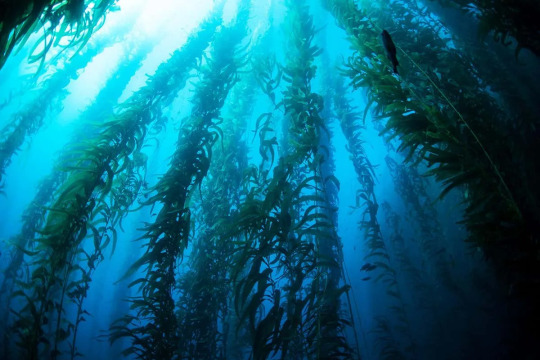
Kelp forests provide an estimated value of $500 billion to the world and capture 4.5 million tonnes of carbon dioxide from seawater each year. Most of kelp’s economic benefits come from creating habitat for fish and by sequestering nitrogen and phosphorus.
7. Medical Marijuana Improved Parkinson’s Disease Symptoms in 87% of Patients

Medical cannabis (MC) has recently garnered interest as a potential treatment for neurologic diseases, including Parkinson's disease (PD). 87% of patients were noted to exhibit an improvement in any PD symptom after starting medical cannabis. Symptoms with the highest incidence of improvement included cramping/dystonia, pain, spasticity, lack of appetite, dyskinesia, and tremor.
----
That's it for this week :)
This newsletter will always be free. If you liked this post you can support me with a small kofi donation:
Buy me a coffee ❤️
Also don’t forget to reblog
817 notes
·
View notes
Text
So I'm absolutely not an expert on the subject, and this post is just a bunch of thoughts I've been turning over in my head a lot, but: on the subject of Industrial Agriculture, the Earth's carrying capacity, and agroforestry
Writings from people who propose policy changes to secure the future of Earth treat energy use by organisms in (what seems to me like) the most infuriatingly presumptive, simplistic terms and I don't know why or what's wrong or what I'm missing here.
Humans have to use some share of the solar energy that reaches Earth to continue existing.
The first problem is when writers appear to assume that our current use of solar energy via the agricultural system (we grow plants that turns the light into food.) already is maximally efficient.
The second problem is when writers see land as having one "use" that excludes all other uses, including by other organisms.
The way i see it, the thing is, we learned how to farm from natural environments. Plant communities and farms are doing the same thing, capturing energy from the Sun and creating biomass, right? The idea of farming is to make it so that as much as possible of that biomass is stuff that can be human food.
So instead of examining the most efficient crops or even the most efficient agricultural systems, I think we need to examine the most efficient natural ecosystems and how they do it.
What I'm saying is...in agricultural systems where a sunbeam can hit bare dirt instead of a leaf, that's inefficiency. In agricultural systems where the nutrients in dead plant matter are eroded away instead of building the soil, that's inefficiency. Industrial agriculture is hemorrhaging inefficiency. And it's not only that, it's that industrial agriculture causes topsoil to become degraded, which is basically gaining today's productivity by taking out a loan from the future.
I first started thinking about this with lawns: a big problem with monocultures is ultimately that they occupy a single niche.
In the wild, plant communities form layers of plants that occupy different niches in space. So in a forest you have your canopy, your understory, your forest floor with herbaceous plants, and you have mosses and epiphytes, and basically if any sunbeams aren't soaked up by the big guys in the canopy, they're likely to land on SOME leaf or other.
Monocultures like lawns are so damn hard to sustain because they're like a restaurant with one guy in it and 20 empty tables, and every table is loaded with delicious food. And right outside the restaurant is a whole crowd of hungry people.
Once the restaurant is at capacity and every table is full, people will stop coming in because there's no room. But as long as there's lots of room and lots of food, people will pour in!
So a sunny lawn has lots of food (sunlight) and lots of room (the soil and the air above the soil can fit a whole forest's worth of plant material). So nature is just bombing that space with aggressive weeds non-stop trying to fill those niches.
A monoculture corn field has a lot of the same problems. It could theoretically fit more plants, if those plants slotted into a niche that the corn didn't. Native Americans clear across the North American continent had the Three Sisters as part of their agricultural strategy—you've got corn, beans, and squash, and the squash fits the "understory" niche, and the corn provides a vertical support for the beans.
We dump so many herbicides on our monocultures. That's a symptom of inefficient use of the Sun, really. If the energy is going to plants we can't eat instead of plants we can, that's a major inefficiency.
But killing the weeds doesn't fully close up that inefficiency. It improves it, but ultimately, it's not like 100% of the energy the weeds would be using gets turned into food instead. It's just a hole, because the monoculture can't fulfill identical niches to the weeds.
The solution—the simple, brilliant solution that, to me, is starting to appear common throughout human agricultural history—is to eat the weeds too.
Dandelions are a common, aggressive weed. They're also an edible food crop.
In the USA, various species of Amaranth are our worst agricultural weeds. They were also the staple food crop that fed empires in Mesoamerica.
Purslane? Edible. Crabgrass? Edible.
A while back I noticed a correlation in the types of plants that don't form mycorrhizal associations. Pokeweed, purslane, amaranth—WEEDS. This makes perfect sense, because weeds are disaster species that pop up in disturbed soil, and disturbed soil isn't going to have much of a mycorrhizal network.
But, you know what else is non-mycorrhizal? Brassicas—ie the plant that humans bred into like 12 different vegetables including broccoli and brussels sprouts.
My hypothesis is that these guys were part of a Weed Recruitment Event wherein a common agricultural weed got domesticated into a secondary food crop. I bet the same thing happened with Amaranth. I bet—and this is my crazy theory here—I bet a lot of plants were domesticated not so much based on their use as food, but based on their willingness to grow in the agricultural fields that were being used for other crops.
So, Agroforestry.
Agroforestry has the potential for efficiency because it's closer to a more efficient and "complete" plant community.
People keep telling me, "Food forests are nowhere near as efficient as industrial agriculture, only industrial agriculture can feed the world!" and like. Sure, if you look at a forest, take stock of what things in it can be eaten, and tally up the calories as compared to a corn field (though the amount of edible stuff in a forest is way higher than you think).
But I think it's stupid to act like a Roundup-soaked corn field in Kansas amounts to the pinnacle of possible achievement in terms of agricultural productivity. It's a monoculture, it's hard to maintain and wasteful and leaves a lot of niches empty, and it's destroying the topsoil upon which we will depend for life in the future.
I think it's stupid to act like we can guess at what the most efficient possible food-producing system is. The people that came before us didn't spend thousands of years bioengineering near-inedible plants into staple food crops via just waiting for mutations to show up so that we, possessing actual ability to alter genes in a targeted way, could invent some kind of bullshit number for the carrying capacity of Earth based on the productive capability of a monoculture corn field
Like, do you ever think about how insane domestication is? it's like if Shakespeare's plays were written by generation after generation of people who gave a bunch of monkeys typewriters and spent every day of their lives combing through the output for something worth keeping.
"How do we feed the human race" is a PAINFULLY solvable problem. The real issue is greed, politics, and capitalism...
...lucky for us, plants don't know what those things are.
1K notes
·
View notes
Text

Hate Forest - The Gates (Galgenstrang Productions, Funeral Industries, 2010)
youtube
0 notes
Text
Do you ever start something as a joke and lose complete control over your life?

In a world of dwindling hope, love has never mattered more...
[read the full blurb here]
What is Hunger Pangs?
Hunger Pangs, often shortened to “Phangs” by the self-proclaimed phangdom, is my debut romance novel, published in Nov 2020, featuring a deaf, disabled werewolf, a neurodivergent, mad scientist vampire, and an all-powerful enchantress who is the last of her kind.
It is the first book in a slow-burn, polyamorous gaslamp fantasy romance series focusing on the relationship(s) and antics of the three main characters, Nathan Northland, Vlad Blutstein, and Lady Ursula, as they work to save the world they love from imminent magical and ecological disaster.
The first book primarily focuses on the relationship between Nathan and Vlad, with Ursula heavily alluded to in the next book (Pride and Folly) via some shameless flirting and stolen, impulsive kisses.
No love triangles here. Just three highly competent, world-saving bisexuals sharing the same brain cell the closer they get to each other.
There are two editions of the novel. The Flirting with Fangs edition depicts on-page sexual acts, and the Fluff and Fangs edition which uses alternative scenes/fade-to-black scenes for those who prefer not to read depictions of sex. You can read more about why I decided to do this here.
How Did Phangs come to be?
Like most things on my blog, the original concept began as a joke. My friend and enabler, @jeneelestrange, and I were talking about our least favorite tropes in romance/erotica, including but not limited to toxic “alpha” werewolves, brooding stalker vampire boyfriends, and the absolute profound bullshit that is the Conflicted Love Triangle and Bury Your Gays.
Eventually, it culminated in this post:

(source)
It was meant to be a joke. I really cannot emphasize this enough. It was meant to be a shitpost between friends.
A throwaway ADHD impulse.
Tumblr, however, wanted more of these posts, and like a swarming mass of drift-compatible rats in a trench coat, grabbed hold of my lack of impulse control and Ratatouille'd me into becoming an international bestselling author, and, well, here we are.
I also started writing the series while dying, which I highly do not recommend as a functional creative process.
Absolutely do not start a 500k five-part novel series about love and hope while dying from an undiagnosed genetic disorder. Or if you do, make sure you actually die so you don't have to edit the damn thing. (I am mostly kidding.)
What are the themes/tropes/character dynamics of the book?
In the simplest of terms, Phangs is a queer-polyamorous-paranormal-satirical-romance series featuring vampires, werewolves, and all other manner of creatures that go bump in the night.
It is set in a pseudo-regency meets fake-Victorian Gaslamp Fantasy world, complete with gothic castles, enchanted forests, and just a smidge of industrial coal dust.
Style-wise, Phangs has been described by readers as "like reading the queer, goth love child of Terry Pratchett meets Jane Austen," and I've never been more proud of anything in my life.
If Game of Thrones ascribes to the idea that the night is dark and full of terrors, Phangs is the monster-fucker politely sidling up to them at the bar and asking if they can buy them a drink.
It is also primarily a love letter to fandom, which has led some people to believe it’s fanfiction with the serial labels filed off. But as the person who spent five years agonizing over the world-building, I can assure you this is all very much the product of my weird little ADHD brain picking up tropes, shaking them upside down, and running off with whatever fun and interesting things shake loose.
As already stated, the first book, True Love Bites, focuses primarily on the relationship between Captain Nathaniel J. Northland and Viscount Vlad Blutstein.
The first part of the book primarily focuses on Nathan coming home injured from war and trying to find his place in the world as newly deaf and disabled -- something which alienates him from his werewolf family, who don't know what to do with an injury that can't be mended by a full moon.
While working on the island of Eyrie, he encounters Viscount Blutstein -- Vlad-- a neurodivergent, mad scientist dandy vampire with an enthusiasm for demonic botany and a streak of unfailing kindness as broad and expansive as the sky.
It's not so much love at first sight for the pair as instantaneous lust hampered by the restrictions of polite 1880 society and old ingrained prejudices that make them think the other couldn't possibly be interested in them that way. They're just misreading all those heartfelt stares and sexually charged chess games.
(The love is requited, your honor, they're just idiots.)
Both characters are explicitly queer/mspec, as is Ursula, who drops into their world like a magical atom bomb going off, but not before she spends her own parts of the book desperately trying to figure out what manner of dark entity is killing the magical shrines around the world that keep the world alive.
Thematically, the series touches on many things, but the book’s overriding theme is love. Romantically, of course, and love between families, both found or otherwise. But also love as an act of courage. As a choice. An act of defiance in dark and troubling times, and what it means to be loved and belong even though you’re different.
Especially when you’re different.
And I really fucking hope you enjoy it.
To read the full synopsis and check out the heat ratings, buy links and content tags, go to www.joydemorra.com
143 notes
·
View notes